Emergency HVAC Albrighton
Best Emergency Furnace Repair in Albrighton
Receive multiple Emergency AC Repair quotes for your project today! Compare profiles, reviews, accreditations, portfolio, etc... and choose the best offer.

CombiCert
529 reviewsTelford, GBWelcome to CombiCert -Your Trusted Gas Boiler Experts in Telford, England Welcome to CombiCert, your leading provider of professional gas boiler installation, service, and repair solutions in Telford, England, and the surrounding areas. With our extensive industry experience and a team of highly skilled technicians, we are dedicated to ensuring your home stays warm and comfortable throughout the year.At CombiCert, we understand the importance of a reliable and efficient heating system, especially during the colder months. Our goal is to provide top-quality heating solutions tailored to your specific needs. Whether you require a new gas boiler installation, regular boiler servicing, or emergency repairs, our team is ready to assist you promptly and professionally.Why Choose CombiCert? Expert Gas Boiler Services: Our team consists of experienced professionals who specialize in gas boiler installation, service, and repair. We have the knowledge and skills to handle various boiler models and brands, ensuring optimal performance and efficiency. Reliable Heating Solutions: We prioritize your comfort and safety. Our heating solutions are designed to provide reliable warmth, enhance energy efficiency, and lower your heating costs. Trust us to keep your home cozy and inviting, no matter the weather outside. Prompt Response: We understand that boiler issues can occur unexpectedly, causing inconvenience and discomfort. That's why we offer prompt response times and efficient services to resolve any heating problems efficiently. Your satisfaction is our top priority. Quality Workmanship: Our team takes pride in delivering exceptional workmanship on every project we undertake. We adhere to industry best practices and use high-quality materials, ensuring long-lasting results that meet the highest standards of excellence. Transparent Pricing: We believe in transparent and fair pricing. Our competitive rates and detailed cost estimates ensure that you know what to expect, without any hidden surprises. Rest assured, there are no compromises on quality when you choose us. Contact CombiCert Today!When it comes to gas boiler installation, service, and repair in Telford, England, CombiCert is the name you can trust. Our commitment to customer satisfaction and superior heating solutions sets us apart from the rest.Don't compromise on the comfort and efficiency of your heating system. Contact us today at 07393220694 or This email address is being protected from spambots. You need JavaScript enabled to view it. to schedule an appointment or inquire about our services. Let us take care of your gas boiler needs and ensure a warm, cozy home for you and your family.Remember, at CombiCert, we make your comfort our priority!Don't need us just yet? please take a moment to give us a twitter/facebook share... your share will really help a small business like ours grow in the coming months and years.
- Services
- Why Us?
- Gallery
Get Quote
Stourbridge Automotive Ltd
4.6127 reviewsRufford Road, Unit 6, Gainsborough Trading Estate, Stourbridge, DY9 7ND, GBStourbridge Automotive Ltd is an independent automotive specialist workshop based in the West Midlands, operating from a clean, spacious, modern and secure premises at Unit 6, Gainsborough Trading Estate, Rufford Road, Stourbridge DY9 7ND. We provide servicing, maintenance and MOT testing for Audi, BMW, MINI, Mercedes, Jaguar, Land Rover and Range Rover vehicles, along with specialist work and vehicle upgrades. By choosing Stourbridge Automotive Ltd as your independent specialist, you can potentially reduce maintenance costs for your vehicle while ensuring the work is carried out to manufacturers' servicing schedules by our qualified and experienced technicians. Our customers can choose to wait while their vehicle is being serviced in our comfortable customer waiting room, which offers Wi-Fi and drinks machines. Stourbridge Junction train station, with good connections to the main rail network, is conveniently located nearby and within walking distance. Since November 2016, Stourbridge Automotive Ltd has been a member of the TRUST My Garage scheme, adhering to a strict code of conduct, working to high standards, and treating your vehicle with respect. We are committed to looking after all our customers and their vehicles, always putting their best interests first. Block Exemption Rules Vehicle manufacturer warranty is NOT affected due to Block Exemption Rules. The Block Exemption Rules within the Motor Industry allow the owner of a vehicle to use an Independent Garage for servicing as long as that garage meets certain criteria. Read more… Improvements on EV Charging Infrastructure While EV charging has historically seemed to launch at a slow pace across the UK, there has been a significant improvement in 2024. Implementation has increased by a whopping 37% compared to 2023 (according to the latest Zapmap data). Furthermore, the industry trade body ChargeUK has pledged to improve charging solutions and charging locations… Read Latest News
- Services
- Why Us?
- Accreditations
- Gallery
Get Quote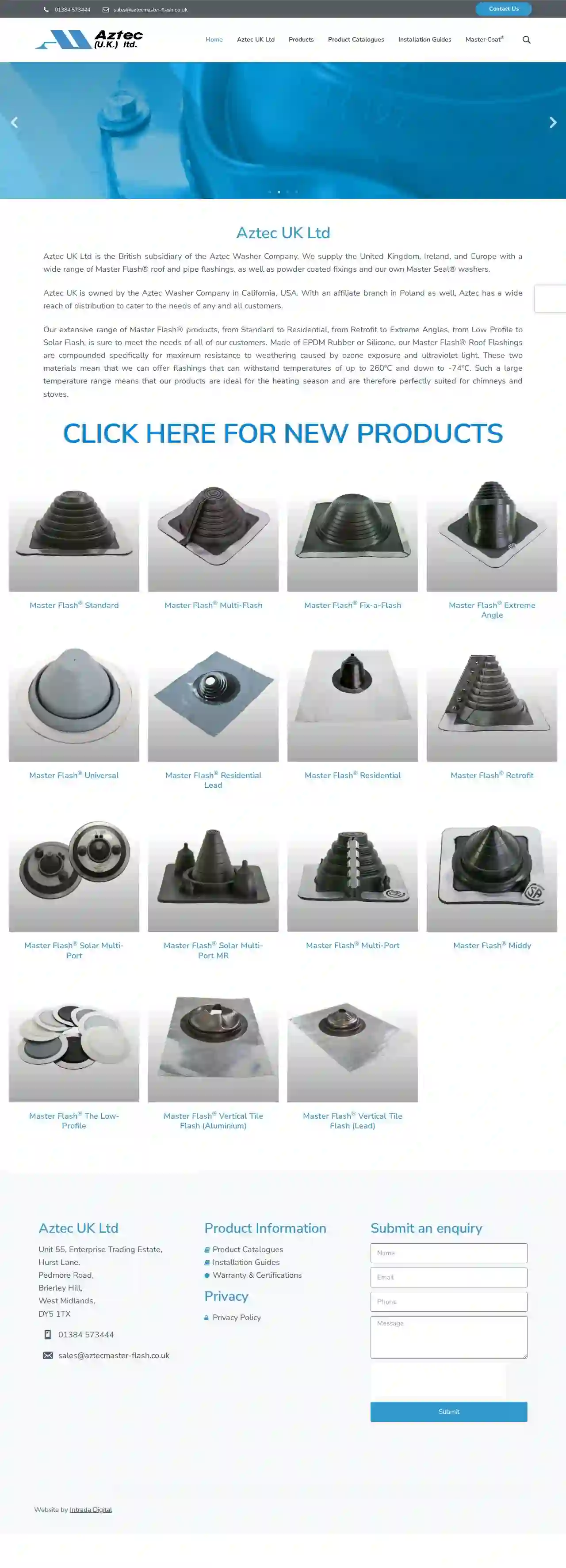
Aztec (U.K.) Ltd
4.85 reviewsHurst Lane, Pedmore Road, Unit 55, Enterprise Trading Estate, Brierley Hill,, DY5 1TX, GBAztec UK Ltd is the British branch of the Aztec Washer Company, supplying the United Kingdom, Ireland and Europe with a wide range of Master Flash® roof and pipe flashings, as well as powder coated fixings and Master Seal® washers. Aztec UK is owned by the Aztec Washer Company in California, USA. With an affiliate branch in Poland as well, Aztec has a wide reach of distribution to cater to the needs of any and all customers.Our extensive range of Master Flash® products, from Standard to Residential, from Retrofit to Extreme Angles, from Low Profile to Solar Flash, is sure to meet the needs of all of our customers. Made of EPDM Rubber or Silicone, our Master Flash® Roof Flashings are compounded specifically for maximum resistance to weathering caused by ozone exposure and ultraviolet light. These two materials mean that we can offer flashings that can withstand temperatures of up to 260ºC and down to -74ºC. Such a large temperature range means that our products are ideal for the heating season and are therefore perfectly suited for chimneys and stoves.
- Services
- Why Us?
- Accreditations
- Gallery
Get Quote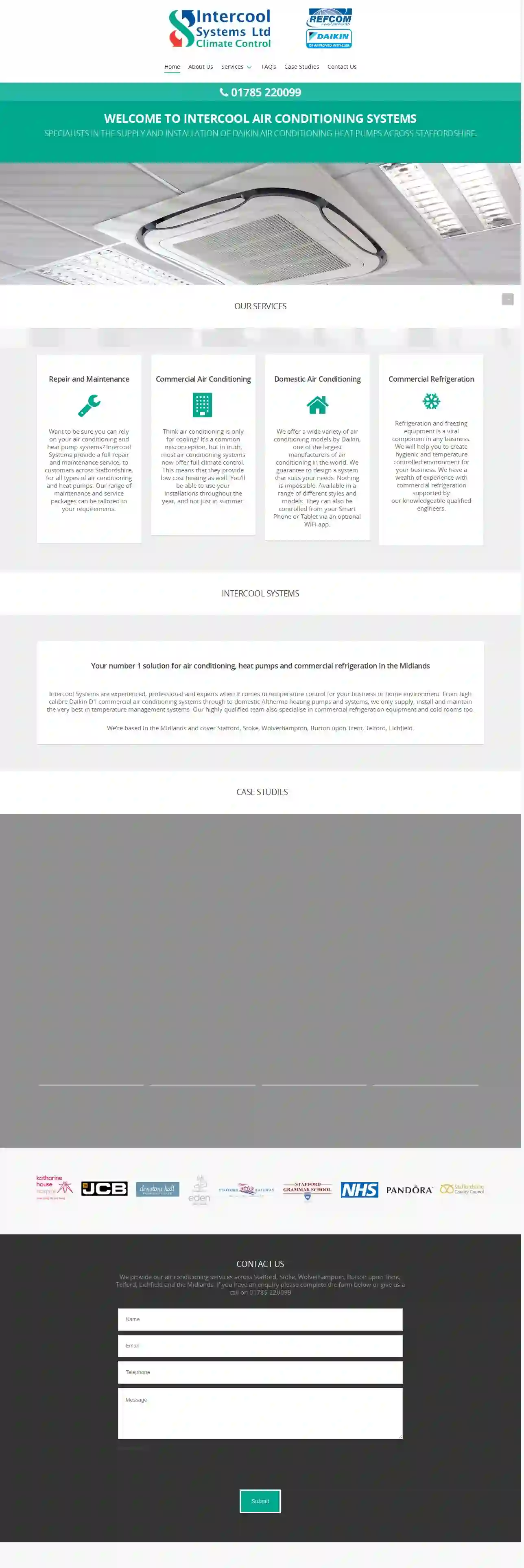
Intercool Systems Ltd
Unit 1, Verulam Court, St Albans Rd, Stafford, ST16 3DT, GBWelcome to Intercool Air Conditioning Systems, Specialists in the supply and installation of Daikin Air Conditioning Heat Pumps across Staffordshire. Our Services include Repair and Maintenance, Commercial Air Conditioning, Domestic Air Conditioning, Commercial Refrigeration, and Air Source Heat Pump. We are a family company that has been trading since 1980, with a small band of qualified engineers greatly respected by our customers for their knowledge, skills and reliability. We pride ourselves in having a rapid response time to breakdowns of less than 2 hrs in emergency situations. Our high standards ensure the installations will be neat and tidy, with noise and disruption kept to a bare minimum. We don't have call centres so our customers speak directly to a member of our dedicated team. We supply a wide range of equipment to both domestic and commercial customers, including the NHS in Stafford, Police in Stafford and Wolverhampton, various Schools in Staffordshire and the West Midlands as well as a number of high profile companies.
- Services
- Why Us?
- Our Team
- Gallery
Get Quote
Boiler HealthCare Limited
4.227 reviews16 Kent Road, Folkestone, CT19 4NT, GBBoiler Healthcare is a trusted name in boiler care and maintenance, serving the Folkestone area with a commitment to quality and customer satisfaction. We offer a comprehensive range of services, from boiler breakdowns and servicing to installations and gas appliance repairs. Our team of experienced engineers is dedicated to providing reliable and efficient solutions, ensuring your heating system runs smoothly all year round. We understand the importance of a warm and comfortable home, and we strive to exceed your expectations with our professional service and competitive pricing.
- Services
- Why Us?
- Accreditations
- Gallery
Get Quote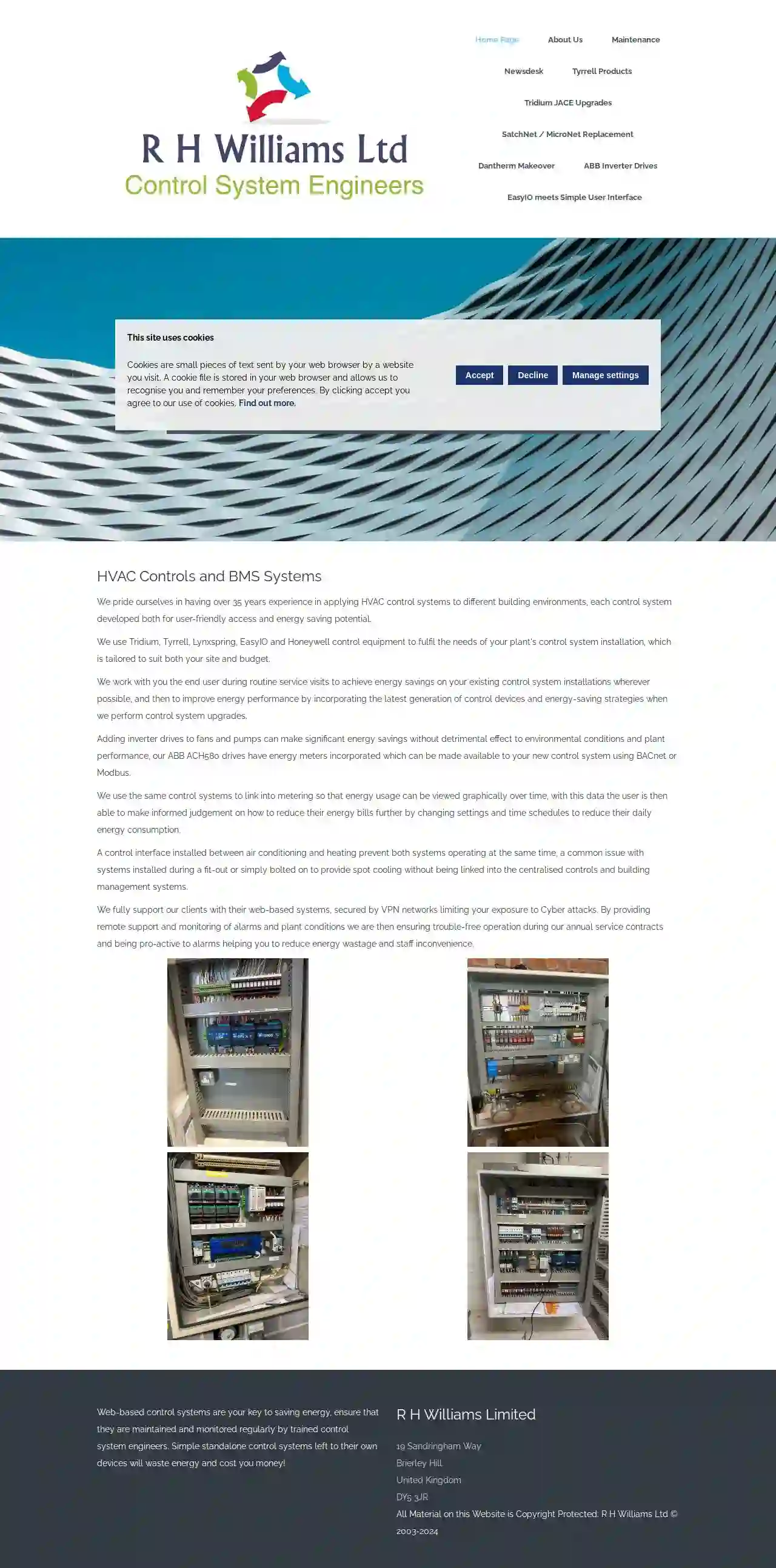
R H Williams Ltd
19 Sandringham Way, Brierley Hill, DY5 3JR, GBR H Williams Limited is a company with over 35 years of experience in applying HVAC control systems to various building environments. They specialize in user-friendly and energy-saving control systems, utilizing equipment from leading manufacturers like Tridium, Tyrrell, Lynxspring, EasyIO, and Honeywell. Their services encompass the design, installation, commissioning, and maintenance of control systems, tailored to meet individual client needs and budgets. The company emphasizes energy efficiency, offering routine service visits to optimize existing control systems and incorporating the latest energy-saving technologies during upgrades. They also integrate inverter drives for fans and pumps, achieving significant energy savings without compromising performance. R H Williams Limited provides comprehensive web-based control system support, including secure VPN access, remote monitoring, and alarm management. They also offer software updates and technical support for various control system platforms. With a strong background in controls engineering, software development, contracting, commissioning, and service, R H Williams Limited has built lasting relationships with leading OEMs. They provide technical support, software engineering, on-site commissioning, and factory validation testing for bespoke control solutions across the UK, Europe, and worldwide.
- Services
- Why Us?
- Gallery
Get Quote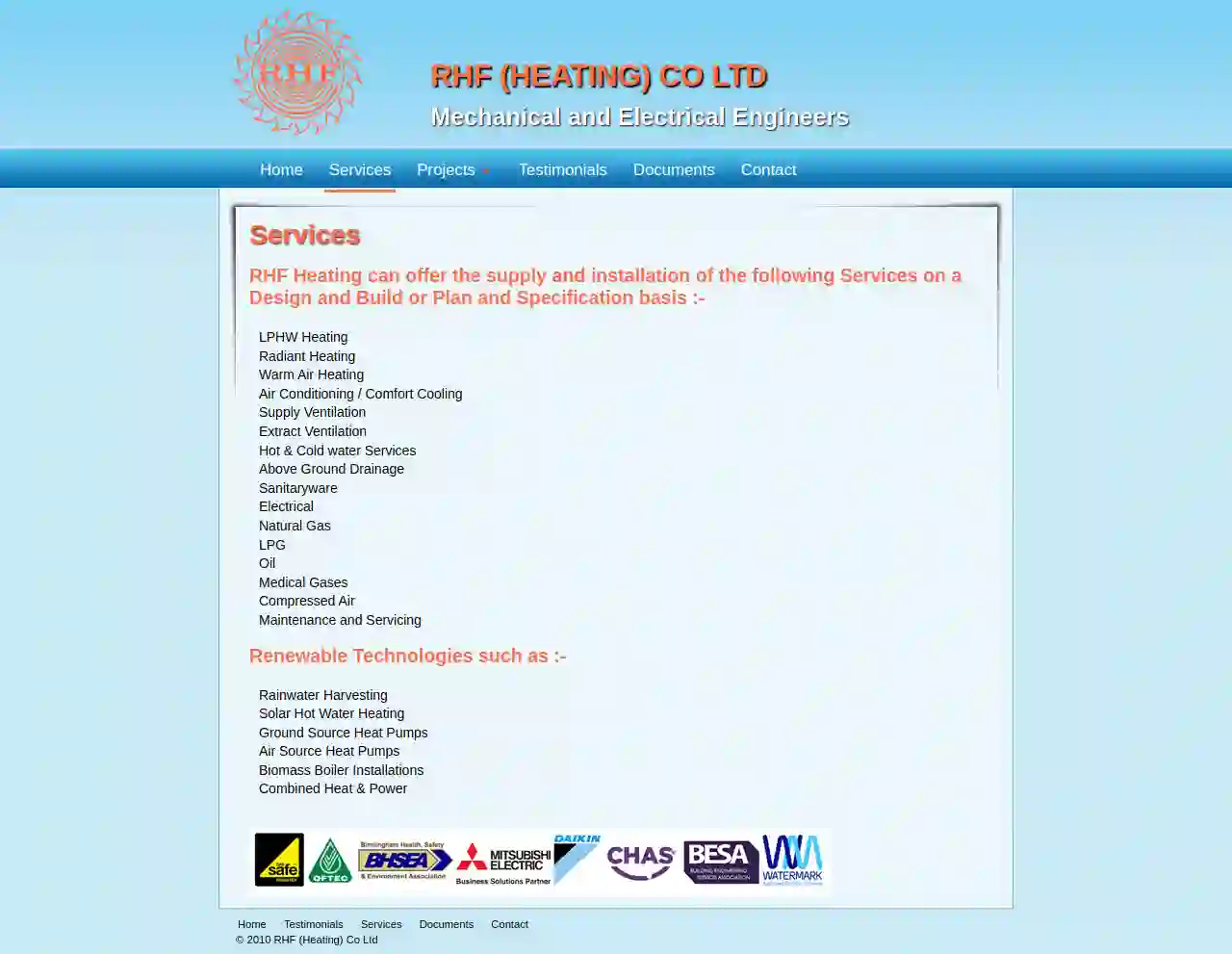
R H F Heating Co Ltd
3.86 reviews71-73 Enville Street, Stourbridge, DY8 1XW, GBRHF (HEATING) CO LTD is a Mechanical and Electrical Engineers company that offers a wide range of services including LPHW Heating, Radiant Heating, Warm Air Heating, Air Conditioning / Comfort Cooling, Supply Ventilation, Extract Ventilation, Hot & Cold water Services, Above Ground Drainage, Sanitaryware, Electrical, Natural Gas, LPG, Oil, Medical Gases, Compressed Air, Maintenance and Servicing, and Renewable Technologies such as Rainwater Harvesting, Solar Hot Water Heating, Ground Source Heat Pumps, Air Source Heat Pumps, Biomass Boiler Installations, and Combined Heat & Power. With a strong commitment to quality and customer satisfaction, RHF Heating has built a reputation for delivering exceptional results in various sectors including Care, Medical, Leisure, Community, Commercial, Education, and more.
- Services
- Why Us?
- Testimonials
- Gallery
Get Quote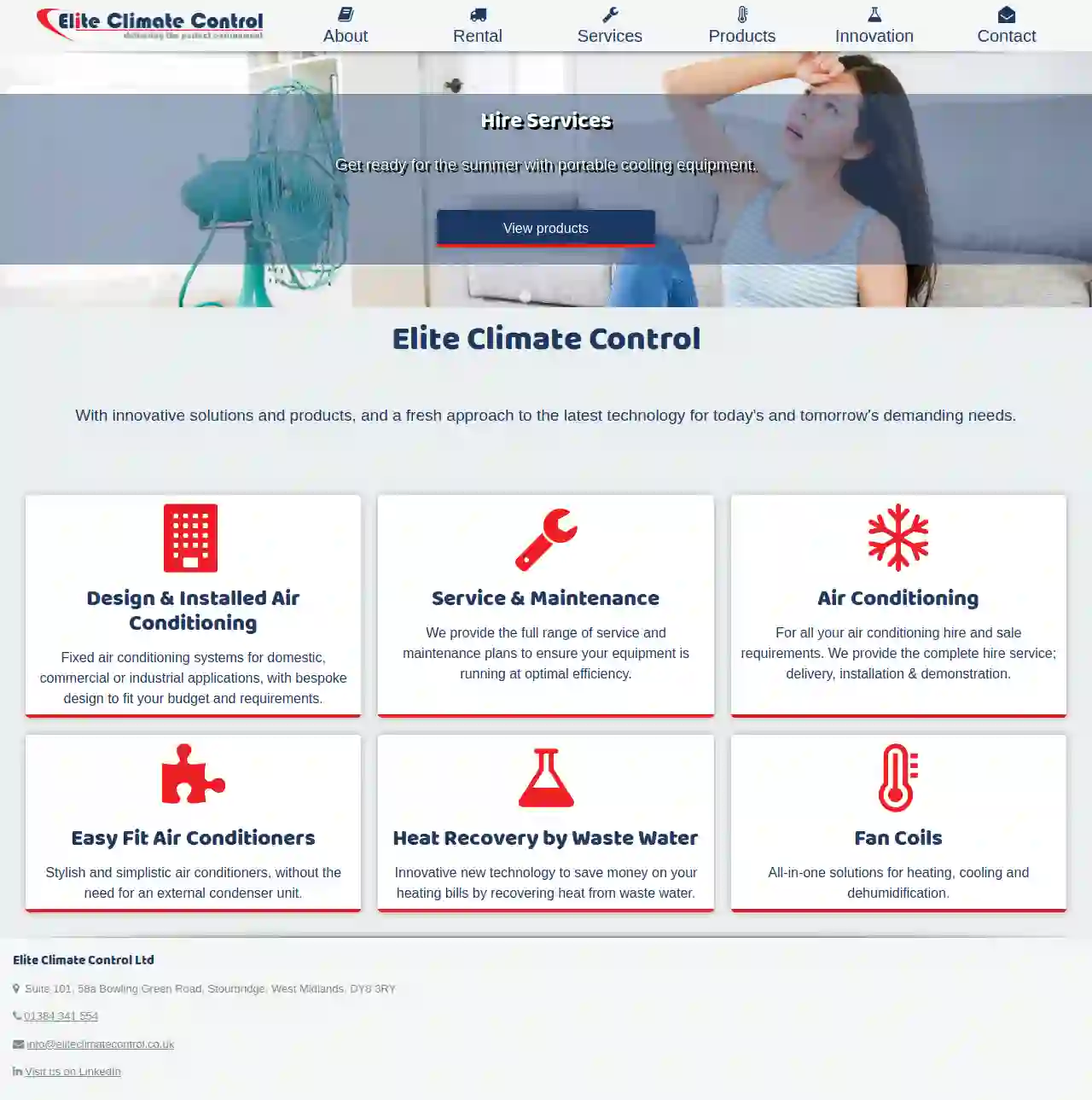
Elite Climate Control Ltd
Suite 101, 58a Bowling Green Road, Stourbridge, DY8 3RY, GBAt Elite Climate Control, we have developed the imagination to ensure our customers are provided with a first-class service from start to finish. We are one of the UK’s only companies to offer a complete service for all your HVAC needs: Installed Air Conditioning & HVAC projects, Service & Maintenance of Air Conditioning & Heating Systems, Rental of Portable Air Conditioning & Chiller Systems, Rental of Portable Heating & Boiler Systems, Air Conditioning Inspections (TM44), Heat Recovery, Sales of Air Conditioning and Heating Products. By listening to your requirements and matching them to a suitable and cost-effective solution we are able to deliver the best advice and package to suit any requirement.
- Services
- Why Us?
Get Quote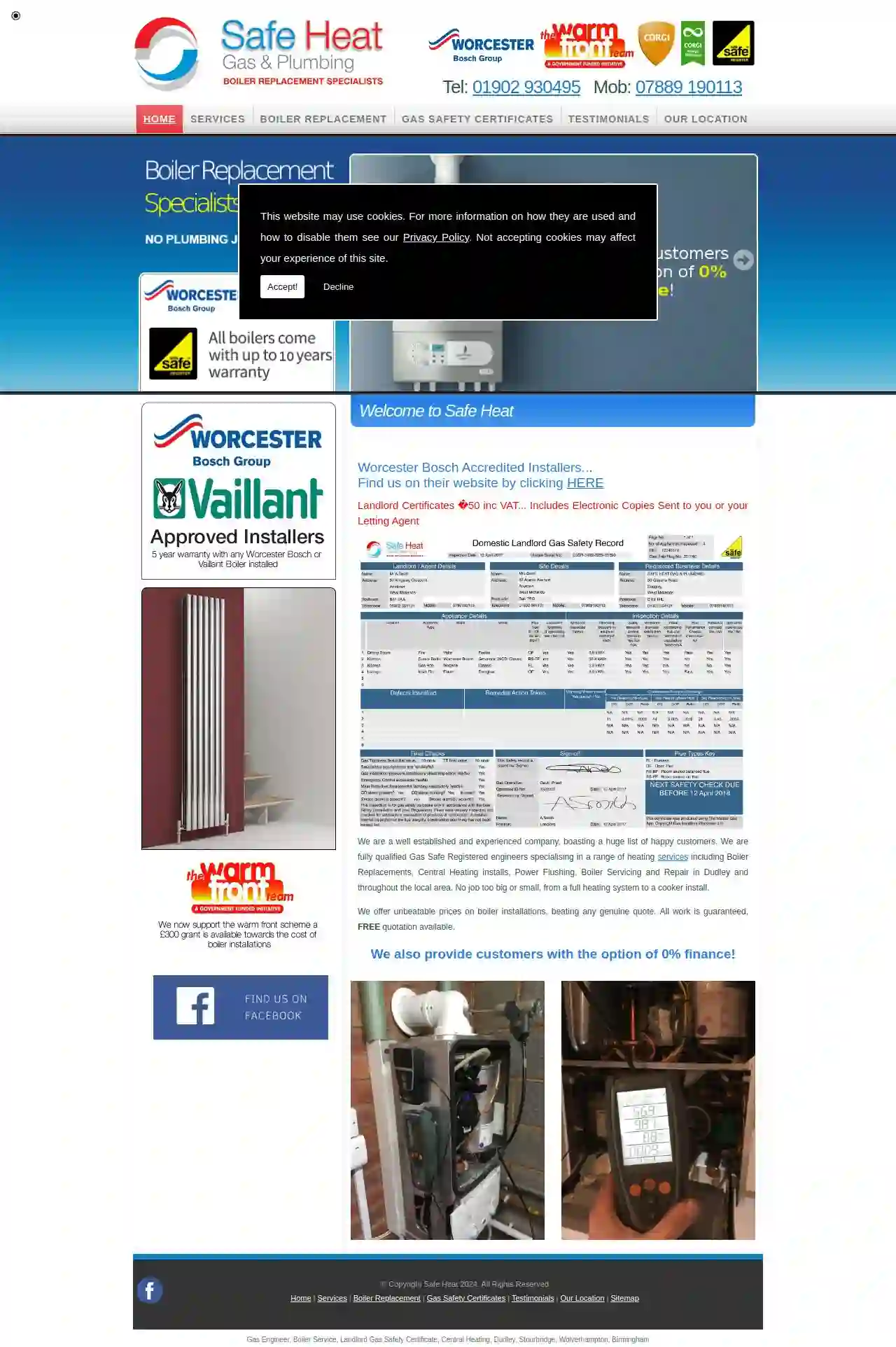
Safe Heat Gas & Plumbing
4.712 reviewsDudley, GBWelcome to Safe Heat, a well-established and experienced company boasting a huge list of happy customers. We are fully qualified Gas Safe Registered engineers specialising in a range of heating services including Boiler Replacements, Central Heating installs, Power Flushing, Boiler Servicing and Repair in Dudley and throughout the local area. No job too big or small, from a full heating system to a cooker install. We offer unbeatable prices on boiler installations, beating any genuine quote. All work is guaranteed, FREE quotation available. We also provide customers with the option of 0% finance!
- Services
- Why Us?
- Testimonials
- Gallery
Get Quote
Honest HVAC
591 reviewsStafford, GBHonest HVAC is a veteran-owned business founded on the values of unconditional integrity and unmatched customer service. We believe that all our customers really want is honest, reliable, and fairly priced HVAC services, and we are here to give just that! Our team is made up of experienced technicians who will provide honest solutions that are the most suitable for your needs. We pride ourselves in always putting our customers first.
- Services
- Why Us?
- Gallery
Get Quote
Over 12,692+ HVAC Contractors on our directory
Our HVAC experts operate in Albrighton & surroundings!
HVACCompaniesHub has curated and vetted the Best HVAC Companies in Albrighton. Find the most trustworthy pro today.
Frequently Asked Questions About Emergency HVAC Services
- Change or clean air filters every 1-3 months.
- Clear debris from around the outdoor unit.
- Check and clean the evaporator coil (if accessible).
- Inspect refrigerant lines for leaks.
How do I find an emergency HVAC technician near me?
What's the difference between a single-stage and two-stage furnace?
How do I maintain my air conditioner?
What is a zoning system, and do I need one?
How do I find an emergency HVAC technician near me?
What's the difference between a single-stage and two-stage furnace?
How do I maintain my air conditioner?
- Change or clean air filters every 1-3 months.
- Clear debris from around the outdoor unit.
- Check and clean the evaporator coil (if accessible).
- Inspect refrigerant lines for leaks.